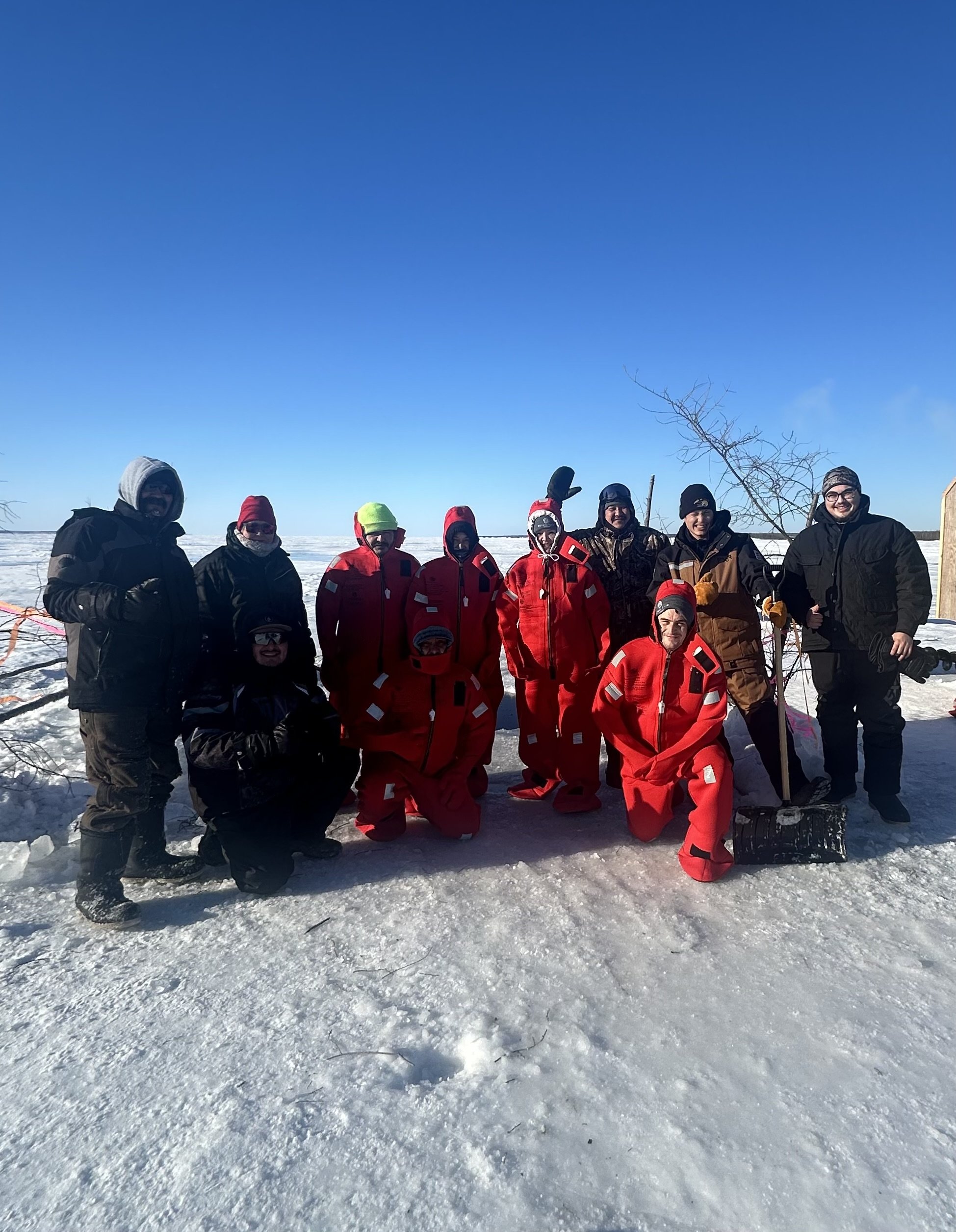
Land Use Planning and Protecting Nuhenéné
Since time immemorial, the Denesųłiné have lived with the land known as Nuhenéné. Their footsteps, stories, and way of life are woven into every part of it. Nuhenéné is not just where they live, it is who they are.
To the Athabasca Denesųłiné, Nuhenéné is more than territory. It is home. It is where the caribou pass, where the fish feed the people, where the medicines grow, and where the spirits of the ancestors still walk. Every part of this land holds meaning. Every place has a name in the Denesųłiné language, a memory, a teaching.
This connection to the land has been carried through generations, through stories, songs, and how people live. The Denesųłiné relationship with Nuhenéné is one of care, respect, and responsibility. It’s not about owning the land. It’s about belonging to it.
Everything the people are, their language, ceremonies, and values, comes from this land. Nuhenéné shapes how the Denesųłiné live, think, and relate to the world around them. It teaches them humility, patience, and respect.
The Denesųłiné are caribou people. They always have been. The caribou gave them food, clothing, tools, and teachings. Families and communities moved with the herds, learning the rhythms of the seasons and the land. That connection continues to run deep, in their hearts, their songs, and their footsteps. The caribou is still a vital part of Denesųłiné life.
Protecting Nuhenéné is not something they chose. It is a sacred duty passed down from the ancestors. The elders say: Take care of the land, and it will take care of you. That teaching continues to guide the people today, as they carry it forward for their children and grandchildren.
This is who the Denesųłiné are. This is what it means to belong to Nuhenéné.

As part of Land Use Planning and Protection, each Athabasca community has a Community Land Technician (CLT) to act as the eyes and the ears of the people.
There’s no denying that the world is changing fast. These are uncertain times, and more than ever, our communities know how important it is not to lose their place within it. The land, language, and way of life must not be carried away with the current. That’s why the creation of the Etthén Néné Stewardship Area in Nuhenéné matters. It is a way for the Athabasca Denesųłiné First Nations and communities to continue their role as caretakers of the land, the water, the air, and all living beings there.
When speaking with Elders about what land protection means to them, they often talk about the future generations and the responsibility of caring for and “watching” the land and water for them. They talk about ensuring that the traditional ways of the Denesųłiné, and the rule of natural and indigenous laws will continue for many more generations to come. That is why Ya' thi Néné Lands and Resources is working with partners to develop and implement these stewardship areas within Nuhenéné in Saskatchewan.
We know that by working together with our communities and partners, we can make significant and lasting change.
This ENSA initiative is particularly powerful because nothing like it exists in Saskatchewan, and very few like it in the world. We have the opportunity to break trail for other First Nations across Canada that might also want to establish IPAs and assert their right to steward their Traditional Territories.
We are not alone in the development of this new way of keeping the land safe. Ya' thi Néné has partnered with the Federal and Provincial Governments as well as organizations such as Canadian Parks and Wilderness Society and International Boreal Conservation Consortium to make this happen. With the guidance of the Athabasca Denesųłiné, we will develop a path forward to a successful project.

What is Etthén Néné Stewardship Area (ENSA)?
Etthén Néné means "Barren-ground caribou land," a place that is sacred to the Athabasca Denesųłiné.
An ENSA is different because its creation and ongoing management are guided by the people who have always known and cared for the land. For the Athabasca Denesųłiné First Nations and communities, this means that they will contribute to important decisions and activities to protect this area. This responsibility includes setting the values and objectives the ENSA will hold as sacred.
This is not just about conservation; it’s about ensuring the land is cared for in a way that reflects the deep relationship the Athabasca Denesųłiné have with it. Every voice will play a part in shaping this land, ensuring that it is cared for according to the teachings and needs of the people. The Athabasca Denesųłiné First Nations and communities will be consulted at every step of the planning process.
Collaboration between the communities and all the interested parties, whether government, industry or others, is at the heart of this initiative. Elders, youth, leadership, and land-users, all our voices will be heard, and all will have a role in shaping the future of Nuhenéné. This is our land, and it is important to us that every member of our community has a say in what happens here.


